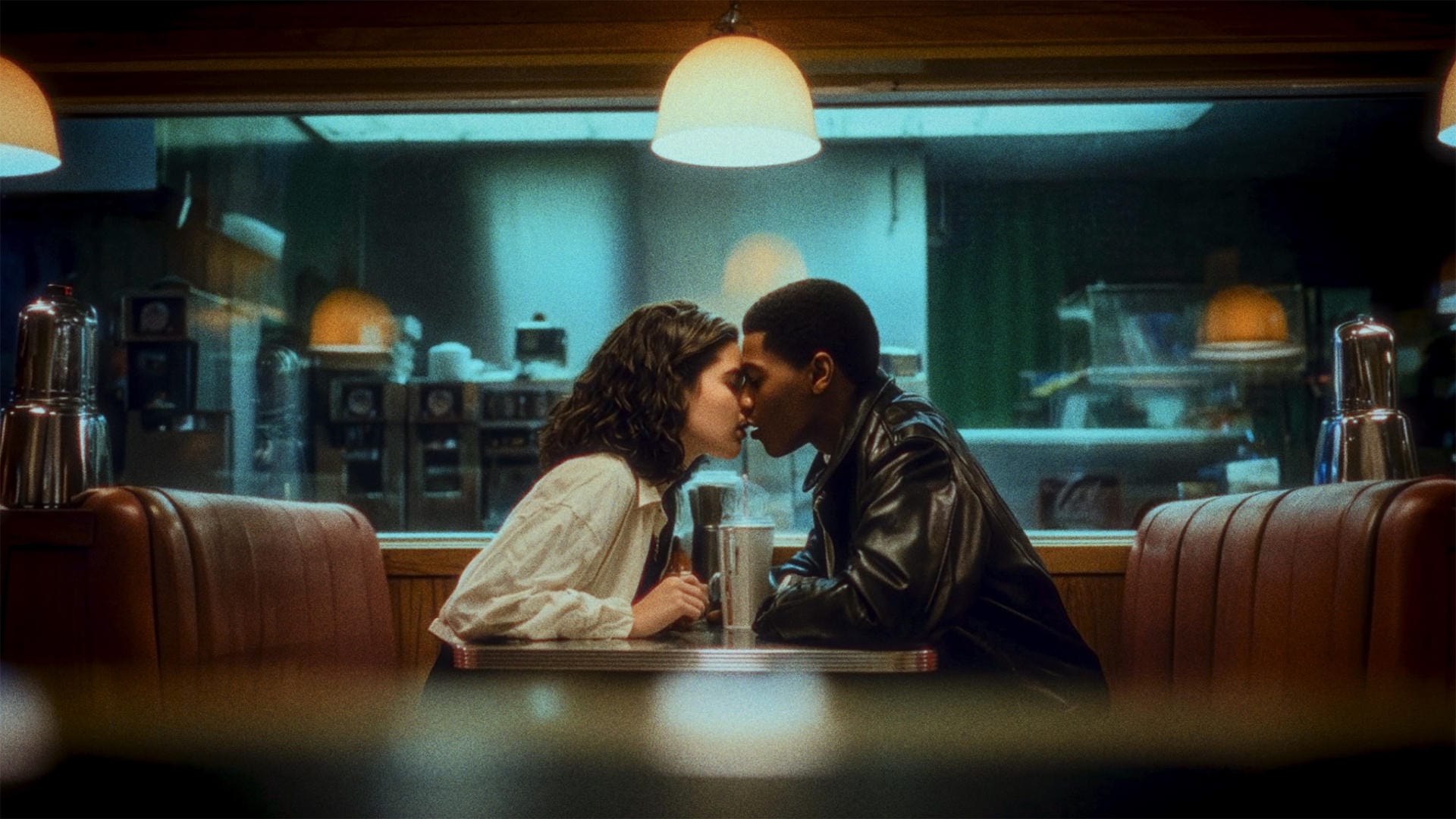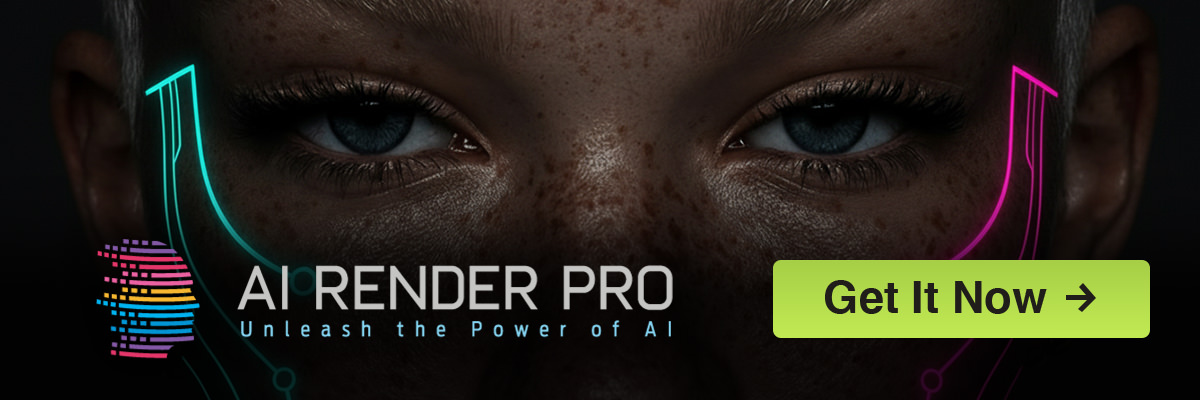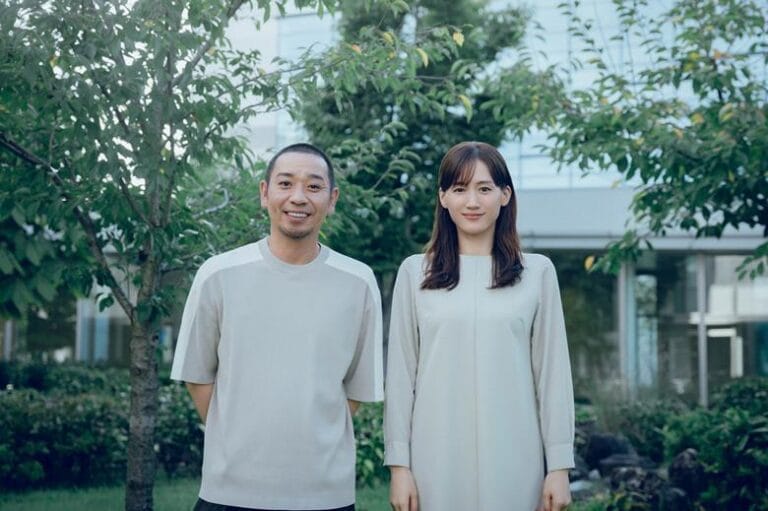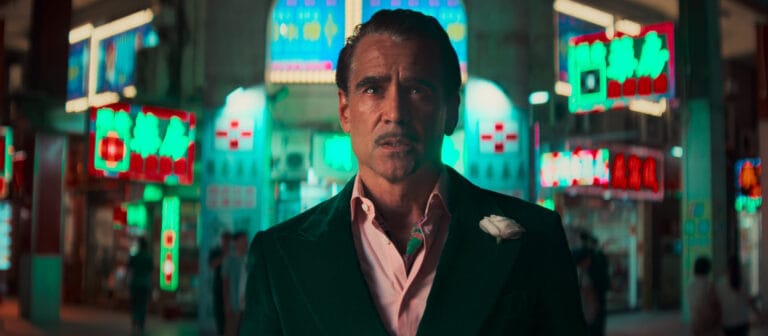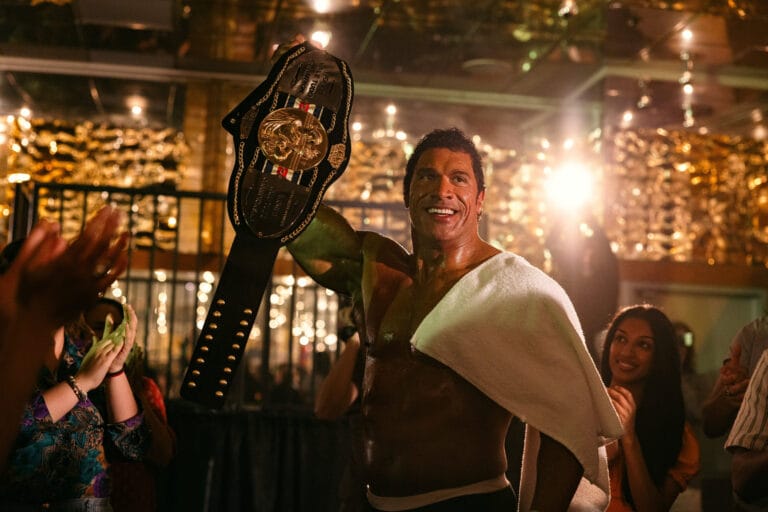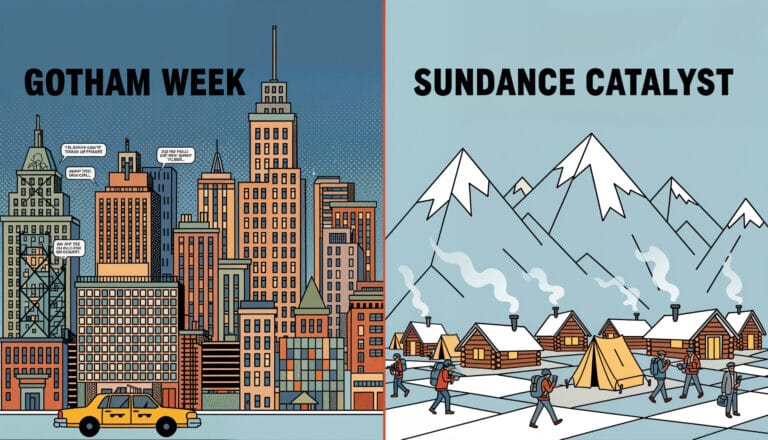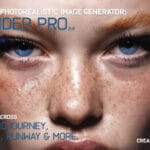Artificial Intelligence has already transformed how we write, paint, and compose music — but cinema is where its impact feels the most profound. Movies combine narrative, visuals, sound, and emotion, and AI is now touching every layer of that creative stack.
In this feature, we’ll explore 10 groundbreaking AI-driven film projects, ranging from indie shorts to global festivals. Some are controversial, some are experimental, and others hint at the blockbuster potential of tomorrow. Each example reveals something about how AI will shape the future of storytelling.
1. Echo Hunter – The World’s First AI Thriller
If there’s one film that captures the ambition of AI in cinema, it’s Echo Hunter by Arcana Labs. Marketed as the “world’s first AI thriller,” this 30-minute film blends AI-generated visuals with live-action performances under SAG-AFTRA approval.
The film follows a bounty hunter tracking rogue AI entities across a dystopian world. What makes it notable is not only its story but also the workflow: AI was used to design environments, generate concept art, and even create certain motion sequences. Human actors were then composited into these backdrops, creating a hybrid that feels futuristic yet uncanny.
The project demonstrates that AI is no longer limited to short, quirky clips. With enough direction, it can anchor a fully realized narrative production. Industry observers are watching Echo Hunter closely because it sets a precedent: can AI film creations become commercially viable, not just experimental?
Watch here:
2. Sunspring – An AI-Written Screenplay
Long before ChatGPT hit the headlines, filmmaker Oscar Sharp and technologist Ross Goodwin conducted a bold experiment in 2016: feed hundreds of sci-fi scripts into a neural network, then shoot whatever screenplay it produced.
The result was Sunspring, starring Thomas Middleditch. The AI — nicknamed “Benjamin” — generated dialogue that was surreal, fragmented, and sometimes unintentionally hilarious. Lines like “I’m the one who was going to be a hundred years old” left audiences puzzled but intrigued.
Though awkward, Sunspring proved a point: AI can write. And while it may not yet rival professional screenwriters, it challenges our assumptions about authorship. Should “Benjamin” get a writing credit? If the actors improvise around its strange dialogue, whose voice are we really hearing?
Watch here:
3. The Dog & The Boy – Netflix’s Controversial AI Anime
In 2023, Netflix Japan and WIT Studio (famous for Attack on Titan) released The Dog & The Boy. At first glance, it looked like another heartfelt anime short. But the credits revealed something new: the background art was generated with AI.
The announcement triggered an online firestorm. Artists accused Netflix of undermining human illustrators; Netflix argued it was an experiment to address labor shortages in Japan’s animation industry.
Beyond the outrage, The Dog & The Boy is important because it marks the first time a major studio openly credited AI alongside humans in a commercial release. Whether one views it as a betrayal or an innovation, the short has already become a reference point in debates about art, automation, and ethics — and a reminder of how quickly AI film creations are entering the mainstream.
Watch here:
4. The Slug – Kafkaesque Horror by TCL
Consumer electronics giant TCL isn’t just making TVs; it’s also experimenting with AI-generated content through its Film Machine initiative. One of the strangest outputs so far is The Slug.
The film depicts a woman undergoing a grotesque transformation, rendered in imagery that feels ripped from a nightmare. Its pacing and visuals evoke Franz Kafka’s Metamorphosis, but filtered through generative AI’s chaotic imagination.
While critics dismissed it as shock-value horror, The Slug demonstrates how brands are starting to treat AI cinema as R&D for the entertainment future. TCL is openly testing whether audiences can connect with AI-generated characters and surreal stories.
Watch here:
5. Backpacker – My AI Concept Trailer for a Feature Film
Instead of highlighting another external project here, I want to share something close to my heart. Backpacker is one of my own feature film projects currently in development, and to kick it off I created a concept trailer using AI tools alongside traditional filmmaking craft.
Backpacker is a thriller and love story about two outsiders caught in a cycle of violence and survival. From the start, I knew it was too ambitious to communicate with just a written pitch — I needed to show the world, its texture, its danger, and its passion. That’s where AI came in.
To build the trailer, I relied on my own workflow and my tool AI Render Pro, which I designed specifically for this purpose. The universal prompting system I created with AI Render Pro allows me to work seamlessly across different platforms — MidJourney, Runway, Sora, and beyond — while keeping visual consistency. This gave me the freedom to experiment quickly, generate environments and textures, and blend them into cinematic edits that capture the raw tone of the film.
The result isn’t a finished product, but a visual proof of concept: a way to share the vision with audiences, collaborators, and potential partners. For me, AI isn’t about replacing crews or cutting corners — it’s about expanding what’s possible for independent filmmakers. With the right workflow, we can create imagery that rivals big studios and bring stories like Backpacker to life long before production begins.
Watch the Backpacker concept trailer here:
6. Olympic Cats & Dogs – Viral Sports Fever
Not every AI film is dystopian. Sometimes, it’s just fun. In 2024, a series of clips dubbed the “Cat Olympics” went viral on social media, showing cats performing Olympic-style dives and routines. They were generated using the Hailuo model by MiniMax.
The videos racked up millions of views and were remixed endlessly on TikTok, YouTube, and Twitter. While simple, they proved that AI-generated shorts can compete in the attention economy — especially when they lean into humor and spectacle.
For brands, the lesson is clear: AI content doesn’t need to be feature-length to have impact. A 30-second clip can go viral, drive engagement, and even spark merchandise.
Watch here:
7. HKUST AI Film Festival – A Global Showcase of AI film Creations
In 2025, the Hong Kong University of Science and Technology hosted one of the first international AI film festivals, drawing over 700 entries from 82 countries. The diversity of submissions was staggering: romantic comedies, cyberpunk dystopias, experimental visuals, and even mockumentaries.
By giving AI filmmakers a platform, HKUST legitimized the movement. It showed that AI cinema is not just a gimmick but an emerging field with its own aesthetics, communities, and debates.
The festival also hinted at a future where AI film festivals may run parallel to traditional ones like Cannes or Sundance. It wouldn’t be surprising if, in a few years, an “AI Feature” category appears in mainstream award shows.
Highlight reel:
8. Sun Day – A Bradbury-Inspired Dystopia
TCL’s Sun Day takes inspiration from Ray Bradbury’s short story All Summer in a Day. It portrays a rain-drenched planet where the sun appears only once in a lifetime. A girl wins a lottery to witness it, only to face heartbreaking consequences.
The visuals — entirely generated with TCL’s Film Machine AI — range from breathtaking planetary shots to eerie close-ups. While some critics mocked the uncanny rendering, others praised it as an emotional proof of concept.
It’s a reminder that AI can handle not just spectacle but also pathos, provided human writers guide the story — and why projects like Sun Day are becoming essential examples in the growing landscape of AI film creations.
Watch here:
9. The Best Day of My Life – Mountaineering With AI
Directed by Kurt Yaeger, The Best Day of My Life blends AI-generated imagery with live-action docu-fiction. It retells a tragic mountaineering accident that transforms into an uplifting story of resilience and rebirth.
The film exemplifies how AI can assist in visualizing dangerous or impossible scenarios. Instead of staging hazardous stunts or using costly CGI, creators can now generate sequences with AI tools.
While the industry debates the ethics of AI, projects like this show its practical utility in lowering production costs without sacrificing dramatic impact.
Watch here:
10. The Audition – Surreal Actor’s Nightmare
George Huang’s The Audition is both a satire of Hollywood and a glimpse into AI’s surreal possibilities. The film follows an actor who faces increasingly absurd tasks during an audition: walking on water, bending physics, and performing scenes that defy reality.
By using AI to visualize the impossible, Huang highlights how casting, performance, and filmmaking could change. Imagine a world where actors don’t just deliver lines but are composited into physics-defying environments on the fly.
The Audition doesn’t just critique the industry — it forecasts it.
Watch here:
What These Films Tell Us
Taken together, these projects map out the landscape of AI filmmaking:
- AI as co-writer (Sunspring)
- AI as background artist (The Dog & The Boy)
- AI as visual generator (The Slug, Sun Day)
- AI as propaganda tool (Midnight Drop)
- AI as viral content factory (Cat Olympics)
- AI as cultural movement (HKUST Film Festival)
The common thread is hybridity. None of these films are purely AI-made; they rely on human direction, editing, and performance. AI is less a replacement than an amplifier — a collaborator that accelerates ideas and lowers barriers.
Final Thoughts
Cinema has always evolved with technology: from silent films to sound, from black-and-white to color, from practical effects to CGI. AI is simply the next leap.
It won’t replace human creativity, but it will redefine workflows, aesthetics, and economics. The filmmakers experimenting today may be rough around the edges, but they are charting a future in which AI tools are as essential as cameras and editing software.
The real question is not whether AI will change filmmaking — it’s how quickly the industry, audiences, and regulators adapt.
Frequently Asked Questions About AI Films Creations
Q1. Can AI really make a full movie on its own?
Not yet. While tools like Sora, Runway, and MidJourney can generate visuals, films still need human writers, editors, and directors to guide the process. The most successful AI films today are hybrids: AI creates concepts and imagery, while humans handle narrative, pacing, and emotional arcs.
Q2. Are AI films replacing human artists?
This is the most debated question. In reality, AI isn’t replacing filmmakers but reshaping workflows. AI can reduce costs for concept art, VFX, or pre-visualization, allowing small teams to do what previously required big studios. But the core of cinema — storytelling and emotion — still depends on human creators.
Q3. What are the risks of AI in filmmaking?
The biggest concerns are:
- Ethics: using datasets without crediting original artists.
- Misinformation: films like Midnight Drop show how realistic fake news could spread.
- Labor impact: animators and VFX artists fear being undercut by automation.
Q4. Can indie filmmakers benefit from AI?
Absolutely. AI democratizes filmmaking by giving indie creators access to tools once reserved for studios with million-dollar budgets. With the right prompts and workflows, a solo creator can now design environments, generate storyboards, and even produce short sequences at cinematic quality — contributing to a new wave of independent AI film creations that rival the ambition of big studios.
Q5. How can I start making my own AI film?
Start small. Try creating storyboards, character designs, or teaser clips using AI tools. Combine them with traditional editing software to refine the results. And most importantly — study how current pioneers like Echo Hunter or Sunspring use AI as a creative partner, not a crutch.
Ready to Create Your Own AI Masterpiece?
The filmmakers in this article are experimenting on the frontier of cinema — and now you can too.
AI Render Pro is the ultimate digital guide to prompt design, cinematic workflows, and hybrid AI production. Whether you’re a filmmaker, content creator, or just curious about AI, it will give you the tools to turn ideas into stunning visuals.
Master MidJourney & Sora workflows
Learn pro-level prompting for cinematic shots
Build storyboards, concepts, and trailers in hours, not weeks
Don’t just watch the future of cinema — create it.
Grab AI Render Pro today and start directing your own AI-powered film.
Discover more from Olivier Hero Dressen Blog: Filmmaking & Creative Tech
Subscribe to get the latest posts sent to your email.

